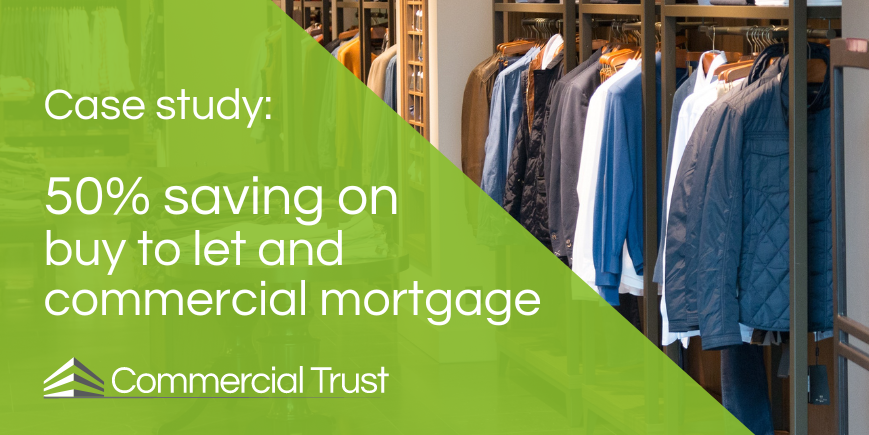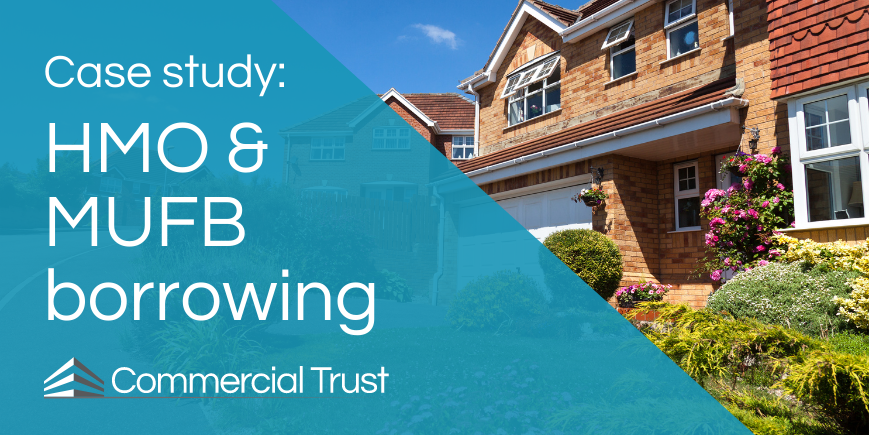This information should not be interpreted as financial, tax or legal advice. Mortgage and loan rates are subject to change.

Categories: buy to let mortgages | portfolio landlords | commercial mortgages
Summary of the case
- Remortgage of commercial and buy to let properties
- Client is a Norwegian national with the right to reside in the UK
- Like for like borrowing required
- Objective was to reduce monthly payments of circa £10k/month
What did we do for the client?
- Analysed the clients wants and needs
- Broke down the portfolio on to 3 separate mortgages, to secure better rates
- Remortgaged the client on a like for like basis, reducing payments down to £5631pcm
- Reduced the client’s outgoings by £262k in interest over the next 5 years
Consolidating a client’s buy to let and commercial borrowing
This client came to us with the objective of remortgaging their portfolio, to see if they could reduce costs. They had a commercial unit, leased to a well-know retail brand, and two standard buy to let properties.
When reviewing the case, we felt that the client had been placed in a very poor position financially, given the set up of the borrowing and the sum being paid in mortgage interest each month.
Given commercial rates are typically higher than buy to let rates, we were surprised to see both the client’s buy to let properties were on the same mortgage as the commercial premises. Our first step was to investigate individual borrowing for each property.
There was no requirement from the client to raise any capital, they simply wanted to see if a better outcome could be achieved, by remortgaging on a like for like borrowing basis.
The client was originally from Norway, but was living with family in the UK and had a permanent right to reside here.
The personal income of the client had been impacted by the Covid-19 pandemic, but there was no adverse credit issues to overcome, the client could demonstrate a good financial standing.
Achieving a huge saving for the client
Whilst in this instance the decision to put all properties on one product was not necessarily driven by its administrative benefits, sometimes clients will approach us with this thinking in mind.
There are on occasion administrative benefits in putting multiple properties on one mortgage, but generally speaking it is often far more financially beneficial to take individual borrowing on each.
With this case, by splitting out the client’s properties onto individual buy to let and commercial mortgage products, we were able to significantly reduce the interest rates, in comparison to those previously being charged.
Where the client had been paying around £10,000 in mortgage payments per month, we were able to almost halve this, bringing the payments down to £5600 per month.
Over a 5 year period, the total saving the client benefitted from was a reduction of £262,000 in mortgage interest payments.
If you would like us to review your portfolio, get in touch. Our job is to take all of the hassle away from you and make a sound recommendation, based on thorough due diligence around your needs and circumstances and research of the products available in the marketplace.
FAQs
Commercial mortgages are for premises being occupied by one, or multiple, businesses. The borrower might own a property they operate their own business from, they might only let it out to other business and not occupy it at all, or they might use some of it for their own company and rent out other parts.
A purely commercial premises is not a property that is lived in.
A buy to let mortgage is residential property being rented out by the borrower to third parties, for them to live in it.
A semi-commercial property is the middle-ground between the two types of property. A good example is a shop with a residential flat above it.
Typically, commercial rates are more expensive than buy to let rates.
Yes, if you are a foreign national, you can invest in buy to let property or commercial property in the UK, subject to wider criteria.
You can also invest in UK property from abroad, if you have links to the UK, such as a British bank account or you are paying tax in the UK.
Recent employment income from overseas may be accepted by some lenders, where you are asked to demonstrate personal income.
If you are not originally from the UK, but want to invest in property here, this is possible where you have a permanent right to reside. You can also be considered in some circumstances where you have a temporary visa.
When it comes to rental property investment, your personal income is less important than when you want to get a residential mortgage.
Why? Its quite simple really – your personal income is not intended to be used to pay your monthly mortgage costs. The income from the rent is.
As such, when a lender assesses your application, they will want to see that the property you are borrowing against can achieve enough rent to comfortably cover the monthly payment.
Each lender will use an affordability calculation, to ensure that the rent exceeds the mortgage payment, by a defined and adequate margin. This is designed to mitigate the risk of the borrower being put in a financially vulnerable situation by the mortgage costs, and any potential change in mortgage costs.





